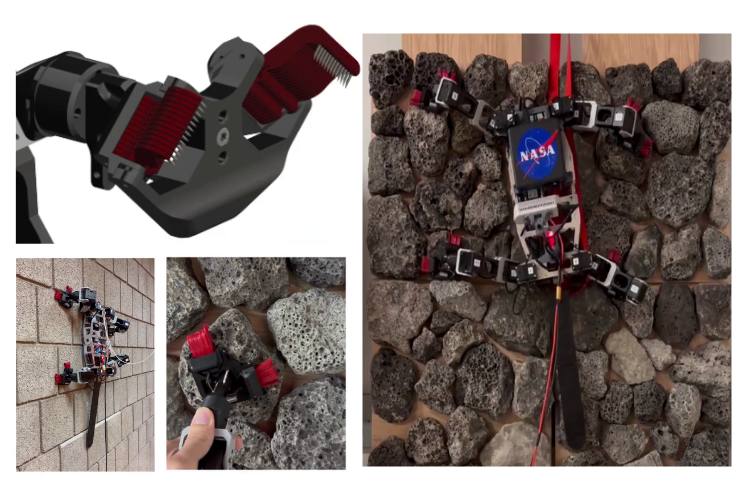
Researchers have developed an innovative climbing robot capable of accessing steep and challenging terrains that traditional rovers cannot navigate. This robot is equipped with fully passive grippers featuring advanced microspine technology and a complex force control system, enabling it to climb rock cliffs and uneven surfaces. According to the authors, this robot, LORIS (A Lightweight Observation Robot for Irregular Slopes), is both lightweight and efficient, allowing the grippers and wrist joints to secure a firm grasp while reducing the mass and complexity of the overall system.
Talking about microspine technology, it is inspired by the microspine grippers on the robotic arms of NASA’s rovers, which are used to grasp and secure boulders. These microspines use thousands of small spines to dig into the boulder, creating a strong grip. In this robot, the technology is partially implemented: whenever the passive grippers step on any surface, the microspines engage with small asperities in the climbing substrate to provide adhesion. Additionally, the robot generates internal force between opposite grippers, which further improves adhesion and reliability in climbing.
Above is the practical demonstration of LORIS by its authors. You can see that it has been successfully tested on flat cinder block walls and uneven rock surfaces in full Earth gravity. This versatile robot is poised to transform scientific exploration, geological surveys, and search and rescue operations. This innovation marks a significant leap forward in the field of robotic climbing technology.

